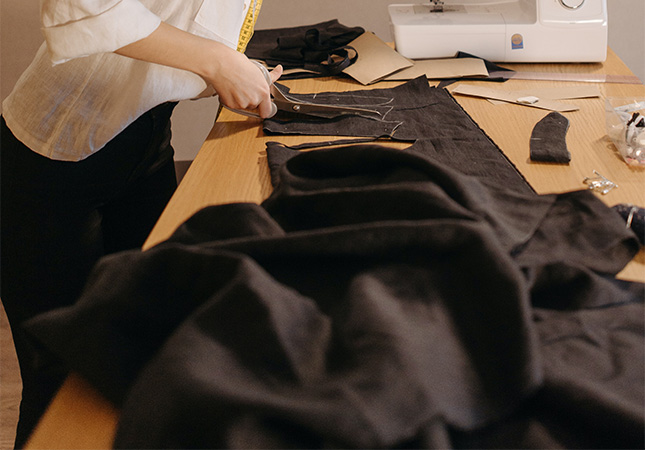Textiles form an essential part of our lives, from the clothes we wear to the furniture that sits in our homes. As such, the textile cutting machine industry has become increasingly important in recent years.
A textile cutting machine is a powerful tool that can be used to cut through thick or thin fabrics quickly and easily. There are many different types of textile cutting machines on the market, each designed for a specific type of fabric or material.
Whether you need to cut through multiple layers of fabric at once, or create intricate designs and patterns, a textile cutting machine can help you get the job done quickly and efficiently.

Types
There are several types of textile cutting machines available on the market, each with its own unique set of features and benefits.
The most common type of textile cutting machine is the rotary cutter, which uses a rotating blade to cut fabric. Rotary cutters are available in a variety of sizes and can be used to cut straight or curved lines.
Another type of textile cutting machine is the die cutter, which uses a metal die to cut fabric. Die cutters are often used to cut complex shapes or patterns out of fabric.
Other types of textile cutting machines include scissors, shears, and knives. Scissors and shears are typically used to cut small pieces of fabric, while knives are more often used to cut larger pieces or strip fabrics.
Importance
As the textile industry has grown, so has the demand for cutting machines. There are a number of reasons why textile cutting machines are so important in this industry.
Textile cutting machines help to speed up the production process. They can cut through multiple layers of fabric at once, which saves a lot of time.
Textile cutting machines are also very precise. This is important when working with delicate fabrics or when trying to achieve a certain look.
Textile cutting machines also help to reduce waste. By being able to accurately cut fabric, there is less material that is wasted during the manufacturing process.
Overall, textile cutting machines are an essential part of the textile industry. They help to speed up production, achieve precision cuts, and reduce waste.
Advantages
There are many advantages to using a textile cutting machine over traditional methods of cutting fabric. Perhaps the most obvious advantage is the speed and efficiency with which a textile cutting machine can cut fabric. This can be a huge time-saver for business owners or anyone who needs to cut large amounts of fabric on a regular basis.
Another advantage of using a textile cutting machine is the precision with which it can cut fabric. This means that less fabric is wasted, which can save money over time. In addition, when fabric is cut more precisely, it often results in a neater and more professional-looking final product.
Textile cutting machines can also be used to create interesting patterns and designs on fabric. This can add visual interest to otherwise plain garments or other items made from fabric. Additionally, this technique can be used to create customized products, such as creating a company logo on a shirt or adding personalization to a baby blanket.
Applications
Industrial cutting machines are used in a variety of industries for cutting different materials. Textile cutting machines are used in the textile industry for cutting fabric. These machines come in a variety of sizes and capabilities, depending on the needs of the textile business.
Some textile cutting machines are designed for cutting single pieces of fabric, while others can cut multiple layers at once. The machine's blade is controlled by a computer, which allows for very precise cuts. This is important in the textile industry, where even a small mistake can ruin an entire piece of fabric.
Textile cutting machines are used in a variety of settings, from small shops to large factories. They are an essential part of the textile industry, and have made it possible to mass-produce clothing and other textiles quickly and efficiently.
Conclusion
There are a few factors to consider when purchasing a textile cutting machine. The type of fabrics you will be cutting, the amount of fabric you will be cutting, and the types of cuts you need to make will all play a role in choosing the right machine for your needs.
When it comes to textile cutting machines, there are a few different options on the market. Rotary cutters are great for cutting straight lines, while die cutters can create more intricate cuts. Laser cutters are also an option, but they can be more expensive.
No matter which type of machine you choose, be sure to test it out before making a purchase. Make sure it can handle the type of fabric you want to cut and that it can make the types of cuts you need. With a little research, you should be able to find the perfect machine for your needs.




